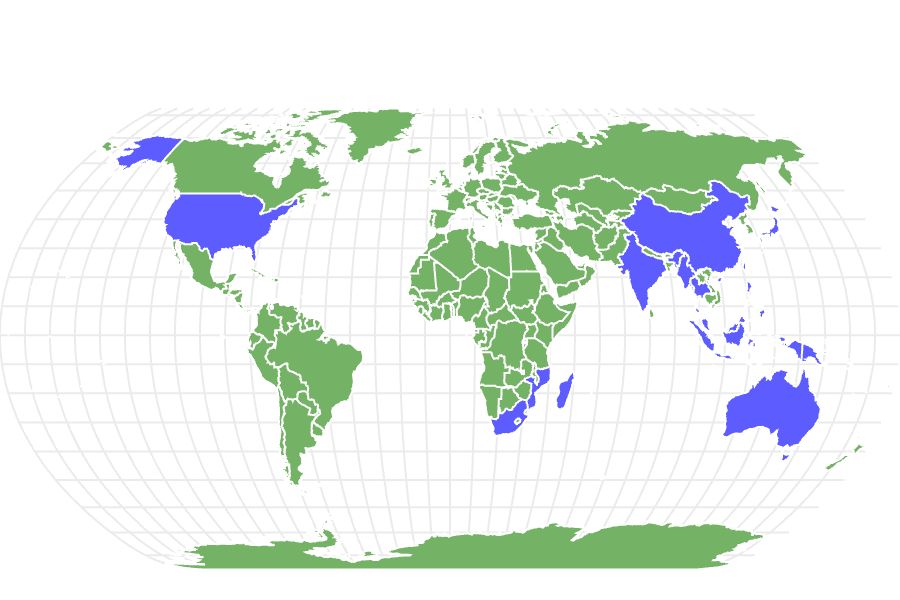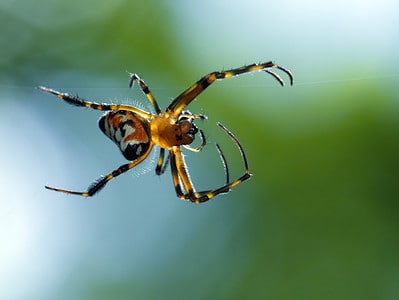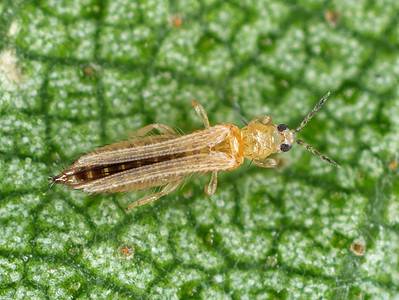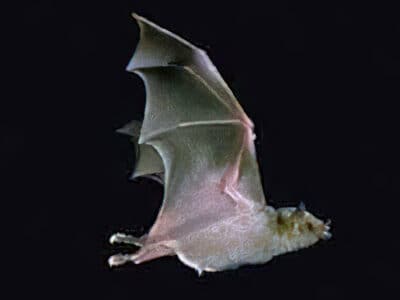Spotted Garden Eel
heteroconger hassi
Males battle each other over females and territory
Advertisement
Spotted Garden Eel Scientific Classification
- Kingdom
- Animalia
- Phylum
- Chordata
- Class
- Actinopterygii
- Order
- anguilliformes
- Family
- congridae
- Genus
- heteroconger
- Scientific Name
- heteroconger hassi
Read our Complete Guide to Classification of Animals.
Spotted Garden Eel Conservation Status
Spotted Garden Eel Facts
- Prey
- Planktonic animals
- Main Prey
- zooplankton, krill
- Name Of Young
- juveniles
- Group Behavior
- Colony
- Fun Fact
- Males battle each other over females and territory
- Most Distinctive Feature
- Large eyes
- Distinctive Feature
- Tiny pectoral fins
- Habitat
- Tropical and subtropical waters near coral reefs
- Predators
- Triggerfish and snake eels
- Diet
- Herbivore
- Type
- eel
- Common Name
- Spotted garden eel
- Special Features
- Excellent eyesight
- Location
- Indo-Pacific
View all of the Spotted Garden Eel images!
The spotted garden eel spends its life with its tail buried in the sand and its mouth open, facing the current, waiting for food.
Summary
The spotted garden eel is a small, slender fish native to tropical and subtropical waters in the Indo-Pacific Ocean. They dig tiny burrows in the sea floor, where they live tail-first, swaying in the water’s current. Once planted, they don’t move often except to mate. And if they are ever caught off-guard around predators, they quickly dash back into their holes. Discover everything there is to know about the shy spotted garden eel, including what it eats and how it behaves.
Amazing Facts About the Spotted Garden Eel
- They live in large congregations, but only one eel per burrow.
- Males occasionally tussle over territory and females.
- They are rather elusive, slipping into their holes when unknown or undesirable creatures swim past.
- They feed by keeping their mouths open facing the current and waiting for food to float past.
Scientific Name
The spotted garden eel (Heteroconger hassi) belongs to the Anguilliformes order, which encompasses eels. The Congridae family consists of garden eels and are unique due to their lifestyle of living in the sea floor and swaying like aquatic plants in the current. The Heteroconger genus includes small, slender garden eels with large concentrations in the Indo-Pacific.
Appearance
The spotted garden eel is a small fish that can reach 16 inches long, and its body is long and thin, with a head the same width. Its mouth is close to its large eyes, and its tiny nostrils are at the center of its upper lip. The body is white with numerous small black spots. This species, in particular, has three distinct large spots located near the gills, pectoral fins, and anus. They also have strong, pointy tails to dig their homes. They don’t need large pectoral fins for swimming, but if you look closely, you can see tiny fins near the head.
Evolution and History
The first garden eel was recorded in 1959, so it is a fairly new species with not much research performed. Humans do not utilize the spotted garden eel except for occasional aquarium displays. Eels, in general, evolved during the Eocene period in the Western Pacific Ocean and dispersed westward by the current.
Behavior
The spotted garden eel spends its life with its tail buried in the sand and its mouth open, facing the current, waiting for food. Each eel lives in its own burrow among hundreds of other eels in a colony. They dig holes with their tails and secrete a slimy substance that cements the sand walls so they don’t collapse. Juveniles swim to the bottom and create their burrows as soon as they are big enough, and they do not leave unless it is to mate. They live in the current, and you can often see them swaying together as a group with the flowing water. Males who are too close together will occasionally fight over females and territory.
Habitat
These eels live in the tropical and subtropical waters of the Indo-Pacific. You can find them along Africa’s eastern coast and south of Japan near Australia. They live in colonies in the sand near exposed currents, around 50 to 150 feet deep. Their sand-flat homes usually border coral reefs, or in areas with dense seagrass.
Diet
In the wild, spotted garden eels eat tiny planktonic animals like zooplankton and krill. They do not pursue their prey. Instead, they wait for their food to float by in the current. The primary feature that enables them to find food is their excellent eyesight. They can spot food and predators quickly. In aquariums, they eat flake food and hatch brine shrimp.
Predators and Threats
These creatures don’t typically have many predators due to their quick retreats into their holes, but some animals have figured out ways to catch them. The most common predators of the spotted garden eel include triggerfish and snake eels. Snake eels are sneaky predators that create burrows beneath the spotted eel, grasping them tail-first. And triggerfish do not care about tiny holes and will crash into the sand to grab their prey.
Outside of predators, the spotted garden eel has no significant threats and is not utilized by humans.
Reproduction and Life Cycle
The spotted garden eel only leaves its burrow when it’s time to spawn with a mate. Males and females intertwine their upper bodies while their tails remain in their burrow holes. And they can stay in this position for several hours. They produce buoyant fertilized eggs that float to the surface as they are pulled by the current. After hatching, juveniles are independent and swim freely, creating their burrows once they are big enough. For such tiny creatures, the spotted garden eel can live between 35 and 40 years old!
Population and Conservation Status
The IUCN lists the spotted garden eel as LC or “least concern.” While there is no population data for this species, it is believed to be locally abundant, with a wide range across the Indo-Pacific.
Spotted Garden Eel Locations
- American Samoa
- Australia
- British Indian Ocean Territory
- Brunei Darussalam
- Christmas Island
- Cocos (Keeling) Islands
- Comoros
- Cook Islands
- Fiji
- French Polynesia
- Guam
- Hong Kong
- India
- Indonesia
- Japan
- Kiribati
- Madagascar
- Malaysia
- Maldives
- Marshall Islands
- Mauritius
- Mayotte
- Micronesia
- Mozambique
- Myanmar
- Nauru
- New Caledonia
- Palau
- Papua New Guinea
- Philippines
- Samoa
- Seychelles
- Solomon Islands
- South Africa
- Taiwan
- China
- Thailand
- Timor-Leste
- Tokelau
- Tonga
- Tuvalu
- Vanuatu
- Wallis and Futuna
Related Animals
View all 293 animals that start with SSpotted Garden Eel FAQs (Frequently Asked Questions)
Are garden eels venomous?
No. Spotted garden eels are not venomous or harmful to humans in any way.
Where do spotted garden eels live?
They live in the sea floor near coral reefs along ocean currents. You can find them in tropical and subtropical waters in the Indo-Pacific.
Do garden eels leave the sand?
They spend most of their lives in their burrow holes. But they do occasionally leave, especially during the spawning season.
Can you have a spotted garden eel as a pet?
You can keep these fish in a aquarium. However, they are demanding and live for a very long time.
Thank you for reading! Have some feedback for us? Contact the AZ Animals editorial team.
Sources
- IUCN RedList, Available here: https://www.iucnredlist.org/species/198985/2546860
- California Academy of Sciences, Available here: https://www.calacademy.org/learn-explore/creature-closeups/spotted-garden-eel
- Denver Zoo, Available here: https://denverzoo.org/wp-content/uploads/2020/04/Spotted-Garden-Eel.pdf

















